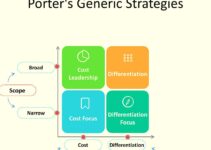Introduction
You have been managing the marketing content of your business, and now you’ve reached the stage of laying down a formal marketing plan. But you don’t know how to write a marketing plan, because you have never done it. Today, we’ll discuss marketing plan, how it’s different from marketing strategy and business plan, its types, and how to write a marketing plan.
What is a Marketing Plan?
A marketing plan is a roadmap that outlines the marketing strategy for your business to execute for the upcoming year to follow month, quarterly, and annually. A marketing plan comprises of following factors;
- A detailed description of your customers’ needs and business targets
- KPIs (key performance indicators) to measure your performance
- A specific time period for the completion of your tasks
- A thorough description of your company’s current market position
- Your company’s marketing and advertising goals and objectives
If you want to learn how to write a marketing plan that would help you to develop an efficient marketing strategy. The marketing plan would keep you focused on your marketing goals and objectives. The goal of the marketing plan is to note down your strategies and tactics in an organized manner. It would help you to easily evaluate the performance of your campaign.
Marketing Strategy vs. Marketing Plan
A marketing strategy outlines a strategy for the company to achieve a certain goal or mission. It would utilize marketing software, media channels, content strategy, and campaign to execute and measure its success.
On the other hand, a marketing plan comprises of one/two or more marketing strategies. It provides a framework where you can create marketing strategies, so that could develop a connection between strategies and the company’s overall business goals.
Marketing Plan vs. Business Plan
A marketing plan is a small part of the company’s overall business plan and it provides a foundation for the creation of marketing strategies. However, the marketing plan comprises a list of strategies and tactics which are very helpful to the company.
Types of Marketing Plan
Some of the main types of marketing plans are as follows;
Annual/Quarterly Marketing Plan
Such plans and strategies are time-oriented and you’ll adopt them for a certain duration.
Paid Marketing Plan
It comprises paid marketing strategies, promotional campaigns, paid social media ads, PPC, and TV ads.
Social Media Marketing Plan
It would include social media campaign, tactics, and channels that you would use to achieve your goals.
Content Marketing Plan
It would focus on the content campaign, tactics, and strategies that you would use to improve the product.
New Product Marketing Plan
It would outline strategies and tactics that you would use for the promotion of your new product.
How to Write a Marketing Plan
It’s time to discuss a step by step complete guide on how to write a marketing plan. Here it’s as follows;
Executive Summary of your Business
An executive summary focuses on important facts, future plans, marketing triumphs, and goals. It’s an introduction of your company to the readers. Therefore, you should include future goals, plans, employees’ anecdotes, facts, the company’s achievements and milestones, metrics, and marketing goals.
You should try to keep the executive summary as brief as possible and don’t add details like a novel. It shouldn’t get longer than 4 paragraphs. However, some executive summaries are only 2 paragraphs long, and they’re short and effective.
It should tell readers that how the company is growing and how it would take competitors out of the market. You don’t mention the specific figures and metrics; just highlight a few. However, the best executive catches the interest of customers with precise information, instead of your pushing down too much information.
You should follow the professional, inspirational, and visionary tone in the writing of the executive summary.
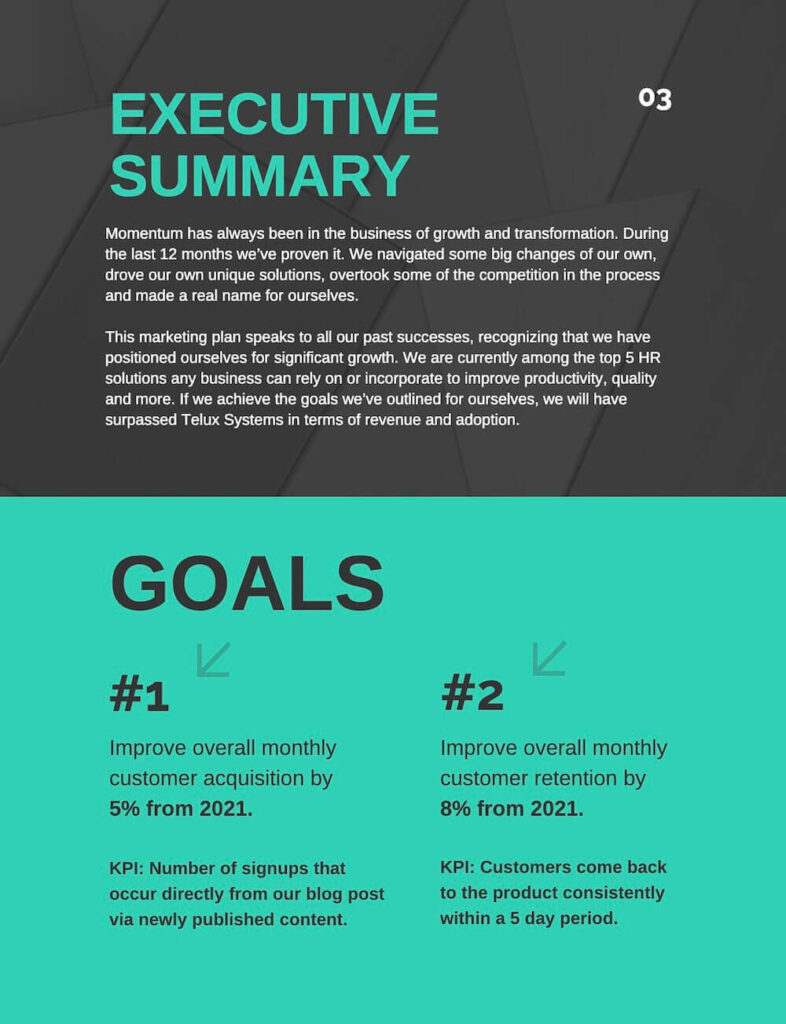
Set Marketing Goals
Goal setting plays a significant role in your marketing plan, therefore, you should be as clear and specific as possible. You should follow the rule of thumb and avoid vague goals. Like decreasing the bounce rate, increasing the company’s retention rate, creating more videos for YouTube, writing more articles, and increasing followers on Twitter.
You should point out the key metrics and percentages that you want to improve. You can also set a time limit in which you’ll increase them. When you set goals with precise figures along with time limits, then it becomes more attractive. For instance, you set a goal of decreasing the bounce rate by 5% in the first quarter.
Target Customer Persona
Developing a target user persona is very significant in your marketing plan. In fact, your focus shouldn’t only be increasing the traffic, but also bringing the right visitors. You should answer questions like; your ideal customers, their problems, their goals, and how your business would resolve them.
When you find an answer to these questions, then it would require a lot of research and essential information. You can conduct research by using the following methods;
- Surveying the target audience
- Researching and studying other business in the same field
- Conducting focus group studies
- Interviewing target customers
After collecting the data, now you should compile it in a proper user persona guide in terms of goals, habits, and demographic traits.
How to create a user persona guide
First of all, you should add a picture or an icon to every user persona’s profile. When you could see their faces, it would make you feel like that they’re real. Next, you should add demographic information like hobbies, activities, challenges, goals, identifiers, income, job, and age.
It also focuses on the personality characteristics like thinking vs. feeling and introvert vs. extrovert. It also analyzes the challenges that customer faces daily. However, it’s important to keep in mind that companies have different types of target customers. That’s why it’s relevant that you should create different user personas so that you could better categorize your marketing campaign and set separate objectives.
Most importantly, your team and client should have a clear picture of the user persona in their mind of the target audience. How they could target and satisfy their needs and wants.

Competitors
Now it’s time to research your competitors. You should know where your competitors are, their occupation, and how you could offer them better than the other competitors. Your competitor research should answer these questions;
- Their total customer market share and user persona
- Their annual growth rate
- Finances and market capital
- Sale strategy and offers
- Marketing strategy
- Their leadership team
- Marketing team
You should also study the strategies they’re using like video marketing, SEO marketing, social media marketing, blogging, and content marketing. However, you should perform a simple SWOT Analysis of your competitors by studying their strengths, weaknesses, opportunities, and threats.
For instance, the primary competitors of Apple are Dell, HP, and Lenovo. The secondary competitors are those companies that are manufacturing tablets.
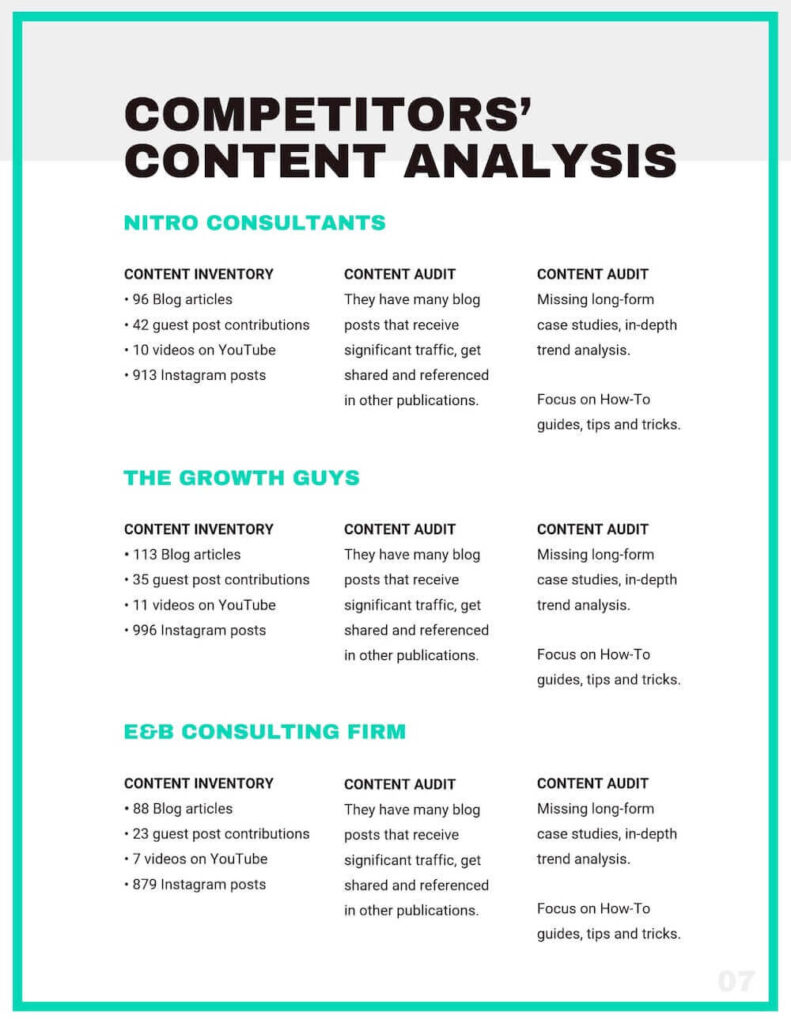
Accurate Metrics
Setting metrics and standards are very important; they would help you to track your performance. Your focus should be to analyze what strategy has worked and what hasn’t so that you could establish a better strategy. It would help you to better comprehend your goals and strategy and you should use charts and infographics to visually present the data.

Marketing Strategy
Now, it’s time to use visual metrics, strategies, and information to break up the marketing strategy and discuss it with your team. The purpose of breaking down strategy is because it becomes easier for the team to handle it.
Mind maps are the best way to present information and develop connections among various parts.
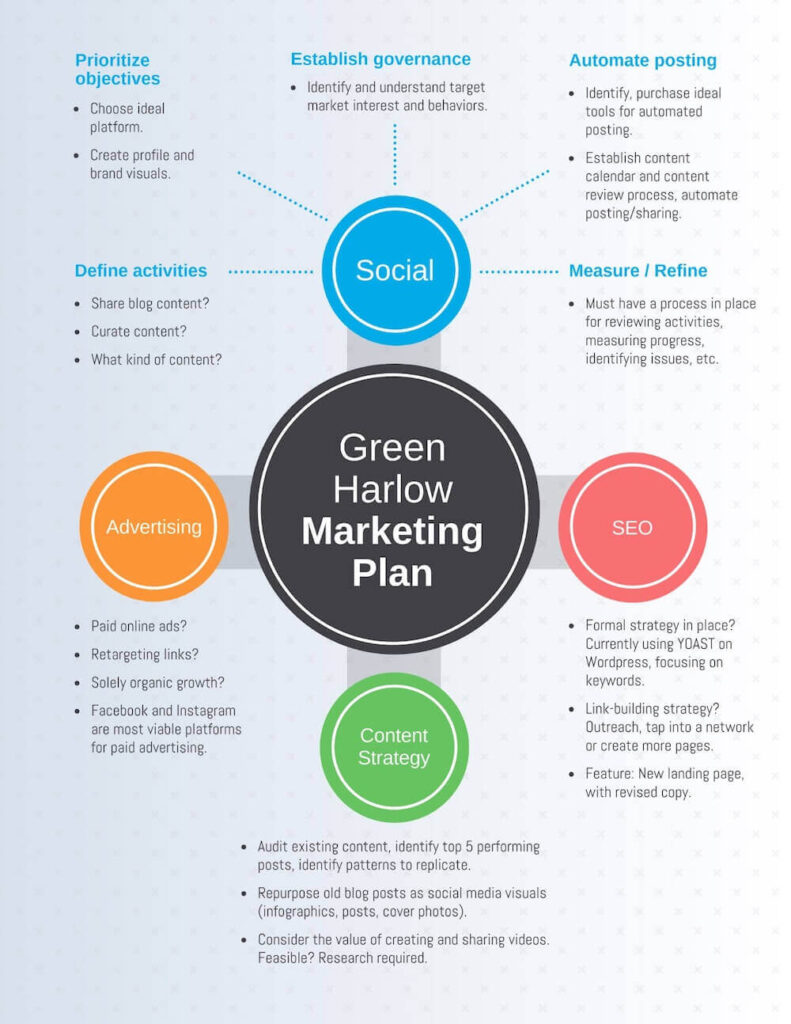
You could also use a flow chart to present the strategy. The goal is to share the information and you should explain the strategy in a few pages.
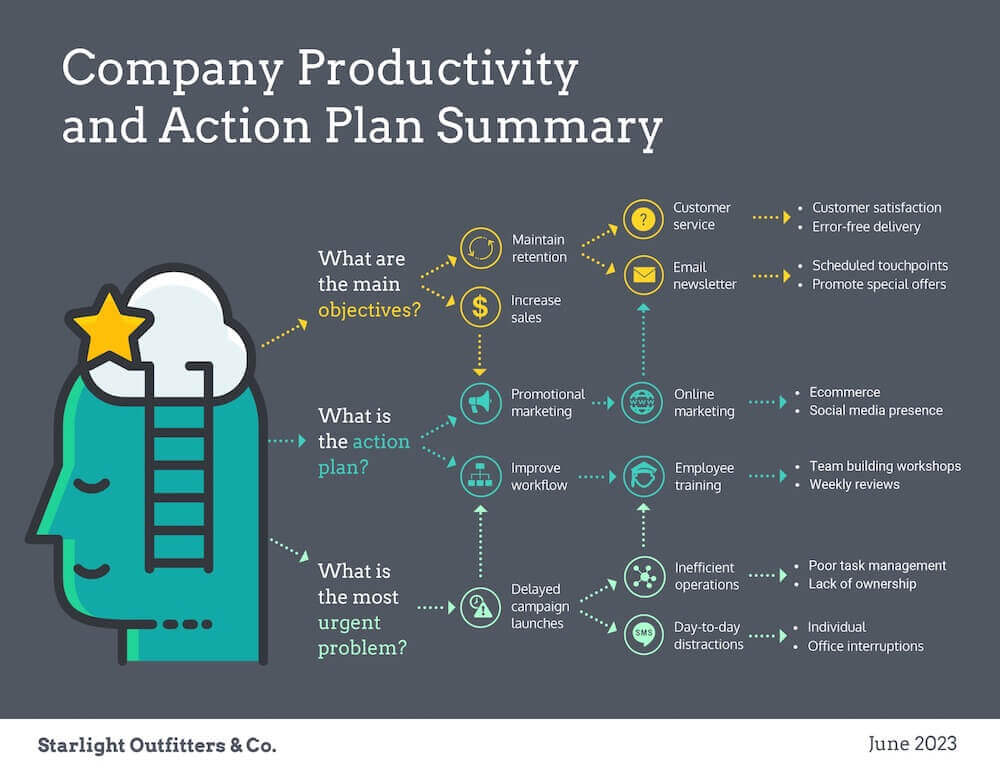
Tracking Guidelines
It’s time to close the marketing plan with a simple explanation that how you would measure performance and results. It would help you to save a lot of frustration by tracking the team’s performance. The guidelines must be clear on how to evaluate the results of the marketing plan and growth rate. The guidelines should be precise like;
- What are you planning to measure?
- How are you planning to measure the results?
- How often would you track the results?
If you want to add more guidelines, then you could do it. Or you could use the checklist to measure daily performance, note down tasks, and marketing results.
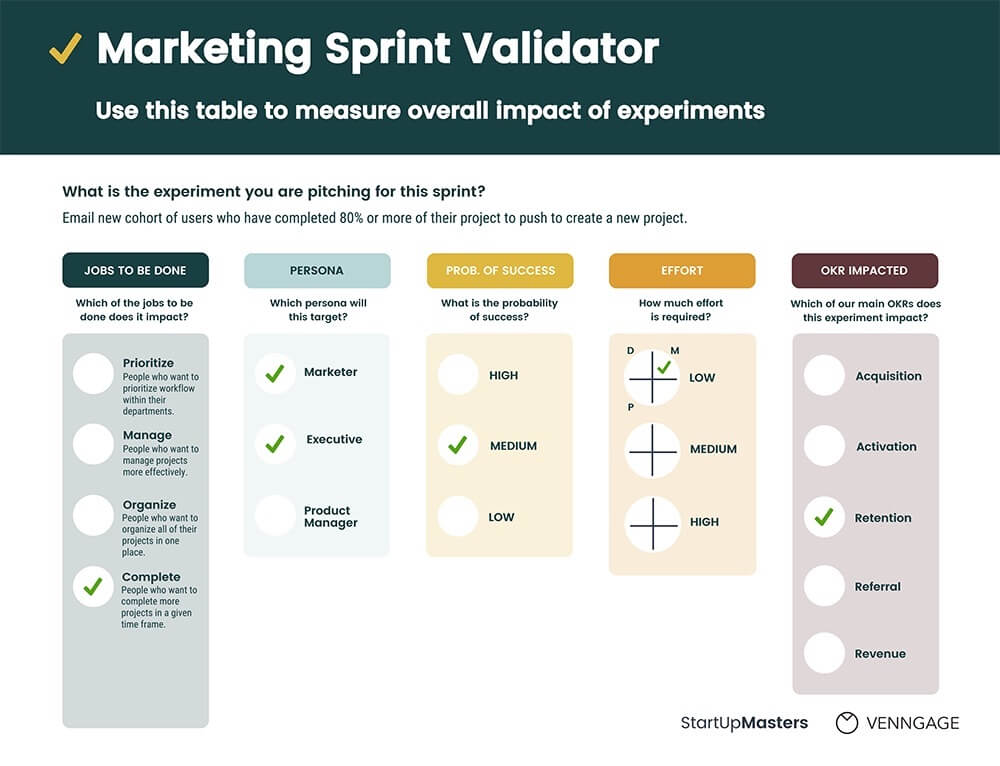
The credit of pictorial examples goes to venngage.com

Ahsan Ali Shaw is an accomplished Business Writer, Analyst, and Public Speaker. Other than that, he’s a fun loving person.

